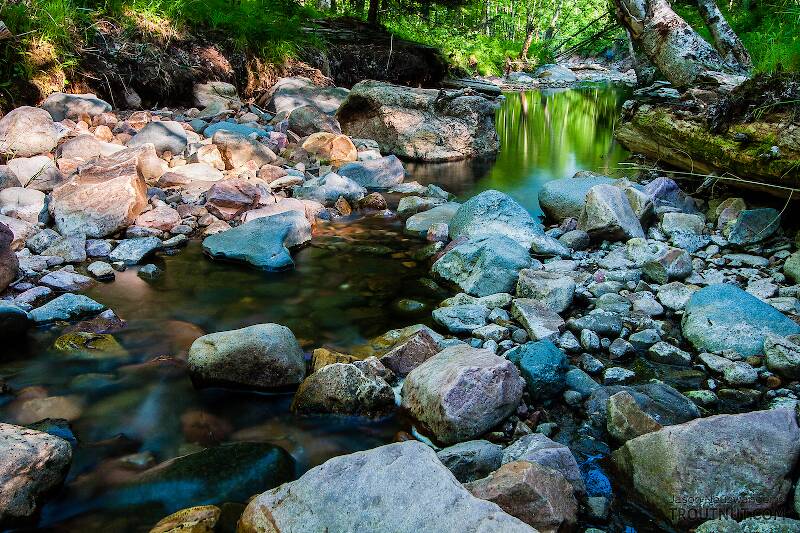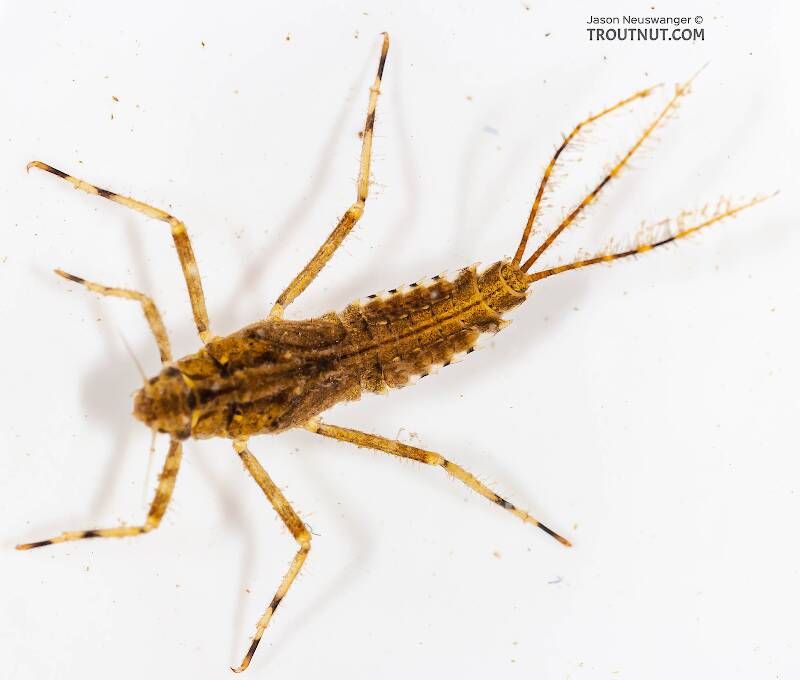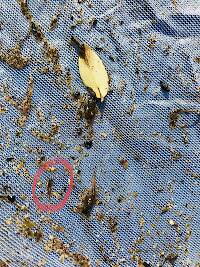
Blue-winged Olives
Baetis
Tiny Baetis mayflies are perhaps the most commonly encountered and imitated by anglers on all American trout streams due to their great abundance, widespread distribution, and trout-friendly emergence habits.
Featured on the forum

Troutnut is a project started in 2003 by salmonid ecologist Jason "Troutnut" Neuswanger to help anglers and
fly tyers unabashedly embrace the entomological side of the sport. Learn more about Troutnut or
support the project for an enhanced experience here.
Oldredbarn on Jan 15, 2010January 15th, 2010, 8:44 am EST
Now this is one that slipped by me Ephemerella septentrionalis...Look at those long legs! I guess we may say that this bug doesn't qualify as a "Super Hatch", but what does anyone know of it? Has anyone other than Jason ran in to it? When does it emerge etc?
I have been meaning to send Jason a note asking him on how accurate is the color of the naturals he photographs to their true color? Are these their true colors or is something lost in translation?
If this bug exists in any numbers and the color is accurate...A natural pheasant tail would cover it nicely.
When I first started tying the "legs" on my PTN's were overly long...I could use them for this guy.
Spence
I have been meaning to send Jason a note asking him on how accurate is the color of the naturals he photographs to their true color? Are these their true colors or is something lost in translation?
If this bug exists in any numbers and the color is accurate...A natural pheasant tail would cover it nicely.
When I first started tying the "legs" on my PTN's were overly long...I could use them for this guy.
Spence
"Even when my best efforts fail it's a satisfying challenge, and that, after all, is the essence of fly fishing." -Chauncy Lively
"Envy not the man who lives beside the river, but the man the river flows through." Joseph T Heywood
"Envy not the man who lives beside the river, but the man the river flows through." Joseph T Heywood
Troutnut on Jan 15, 2010January 15th, 2010, 9:48 am EST
These nymphs are really cool. I remember that their "gait" (if you can say a bug has a gait) seems as though they've got just a little bit of walking stick in them.
Gonzo had some good information on these in another thread.
All the other information I've found on this species from an angling standpoint is on my E. septentrionalis page, and it's not much at all. It sounds like they just blend in with the other Ephemerella sulphur hatches and most people don't notice a few goofy, gangly ones amidst thousands of near-identical invarias.
It's usually pretty accurate, especially in the pictures from 2005 or later. I shoot a lot of pictures (including this nymph) against a white background or with some white object in the frame. If the white thing actually looks white or neutral gray (without some colored tint) you can assume the bug's colors are pretty accurate, too. The main thing to account for is that there's some translucency in a lot of them, especially in the thin parts like legs. When you see the very light olive legs on this nymph, be aware that they'd look pretty different against a dark background.
Also, there's a lot of natural variation in the colors of many nymphs, especially in Ephemerella. Several species come in a wide range of olives and browns in the same stretch of the same stream. I didn't capture enough septentrionalis nymphs to show that, but it's evident in my invaria and subvaria specimens and you could probably expect it for these, too.
Long store short: A PT nymph would probably do it.
Gonzo had some good information on these in another thread.
All the other information I've found on this species from an angling standpoint is on my E. septentrionalis page, and it's not much at all. It sounds like they just blend in with the other Ephemerella sulphur hatches and most people don't notice a few goofy, gangly ones amidst thousands of near-identical invarias.
I have been meaning to send Jason a note asking him on how accurate is the color of the naturals he photographs to their true color? Are these their true colors or is something lost in translation?
It's usually pretty accurate, especially in the pictures from 2005 or later. I shoot a lot of pictures (including this nymph) against a white background or with some white object in the frame. If the white thing actually looks white or neutral gray (without some colored tint) you can assume the bug's colors are pretty accurate, too. The main thing to account for is that there's some translucency in a lot of them, especially in the thin parts like legs. When you see the very light olive legs on this nymph, be aware that they'd look pretty different against a dark background.
Also, there's a lot of natural variation in the colors of many nymphs, especially in Ephemerella. Several species come in a wide range of olives and browns in the same stretch of the same stream. I didn't capture enough septentrionalis nymphs to show that, but it's evident in my invaria and subvaria specimens and you could probably expect it for these, too.
Long store short: A PT nymph would probably do it.
Jason Neuswanger, Ph.D.
Troutnut and salmonid ecologist
Troutnut and salmonid ecologist
Dryfly on Jan 15, 2010January 15th, 2010, 3:40 pm EST
I thought this was moved to Penelomax, a completely knew genus? I know, nit picking, but thats what fishing entomologists do.
Troutnut on Jan 16, 2010January 16th, 2010, 5:47 am EST
I thought this was moved to Penelomax, a completely knew genus?
You're right! That's a recent change I hadn't heard about until you mentioned it. I've changed the site to reflect it.
There's never any need to apologize for nitpicking on this site!
Jason Neuswanger, Ph.D.
Troutnut and salmonid ecologist
Troutnut and salmonid ecologist
CaseyP on Jan 16, 2010January 16th, 2010, 5:58 am EST
I have been meaning to send Jason a note asking him on how accurate is the color of the naturals he photographs to their true color?
last spring i looked carefully at the green drakes on this site and then tied a parachute in an olive/yellow antron mix over a body of slightly greenish white. worked a treat. guess the colors were pretty good!
"You can observe a lot by watching." Yogi Berra
Oldredbarn on Jan 16, 2010January 16th, 2010, 6:27 am EST
Great info guys! I'm wondering now if I've ever had any of these guys hatching around me and somehow just over looked them. I looked at the photos of the dun and they would blend in, no problem, with all the other sulphers. I have fished the same week in May on the Au Sable for 20 years and now my curiosity is peaked.
Years ago I actually purchased an entomology kit from some supply house and intended to use it for my tying and maybe catching the interest of some of my nephews. It's very difficult for me to pull myself away from fishing since I don't have the fishing time I once enjoyed.
Having been sold on bug id(ing) from most of the modern fly fishing authors, it's unfortunate that the classification of these bugs hasn't been set. It seems we learn them and then they are changed. Maybe the old generic names we anglers have ascribed to them was enough...To catch fish anyway. Maybe if I have an apropriate sized sulpher Sparkle Dun I should just fish it and call it a day.
That reminds me...Craig Matthews has some new vids on YouTube from Blue Ribbon Flies. I watched the one of him tying his Sparkle Dun the othe day...
Thanks again!
Spence
Years ago I actually purchased an entomology kit from some supply house and intended to use it for my tying and maybe catching the interest of some of my nephews. It's very difficult for me to pull myself away from fishing since I don't have the fishing time I once enjoyed.
Having been sold on bug id(ing) from most of the modern fly fishing authors, it's unfortunate that the classification of these bugs hasn't been set. It seems we learn them and then they are changed. Maybe the old generic names we anglers have ascribed to them was enough...To catch fish anyway. Maybe if I have an apropriate sized sulpher Sparkle Dun I should just fish it and call it a day.
That reminds me...Craig Matthews has some new vids on YouTube from Blue Ribbon Flies. I watched the one of him tying his Sparkle Dun the othe day...
Thanks again!
Spence
"Even when my best efforts fail it's a satisfying challenge, and that, after all, is the essence of fly fishing." -Chauncy Lively
"Envy not the man who lives beside the river, but the man the river flows through." Joseph T Heywood
"Envy not the man who lives beside the river, but the man the river flows through." Joseph T Heywood
Martinlf on Jan 22, 2010January 22nd, 2010, 10:05 am EST
Gonzo is probably very busy directing a skiing program. I believe he often takes a fishing sabbatical in the winter.
"He spread them a yard and a half. 'And every one that got away is this big.'"
--Fred Chappell
--Fred Chappell
Taxon on Jan 22, 2010January 22nd, 2010, 2:37 pm EST
As for Taxon, once Jason provided the pertinent-information, and Shane provided the nit-picking, he was rendered (almost) speechless.
Quick Reply
Related Discussions
Topic
Replies
Last Reply
0
Jun 29, 2020
by Wiflyfisher
by Wiflyfisher
5
Aug 20, 2009
by Flytyer0423
by Flytyer0423
4
Nov 19, 2017
by Btbo32
by Btbo32









